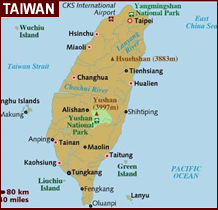Pharmacoeconomic Guidelines: Taiwan
Country/Region: Taiwan

PE Guidelines
PE Guidelines Source:
Taiwan Society for Pharmacoeconomics and Outcomes Research
http://www.taspor.org.tw/
http://www.taspor.org.tw/
Information current as of Wednesday, February 14, 2024
Key Features
| Key Features | |
|---|---|
| Type of Guidelines | PE Guidelines |
| Title and year of the document | Guidelines of Methodological Standards for Pharmacoeconomic Evaluations (2006) |
| Affiliation of authors | Taiwan Society for Pharmacoeconomic and Outcomes Research (TaSPOR) |
| Purpose of the document | Provide stakeholders a guide to conduct, evaluate and report a PE study |
| Standard reporting format included | Yes |
| Disclosure | Yes |
| Target audience of funding/ author's interests | Should state clearly |
| Perspective | Mainly societal, may separate into payer and others |
| Indication | Should be approved by the regulatory body |
| Target population | State clearly, may include subgroup analysis |
| Subgroup analysis | Yes. Treatment regimen, disease groups, symptom complex, severity of disease, patient characteristics |
| Choice of comparator | The one most likely to be replaced, first choice, most effective one, most frequently used. |
| Time horizon | Long enough to cover all significant clinical and cost consequences that are directly related to the intervention. |
| Assumptions required | Yes |
| Preferred analytical technique | The most appropriate method that can reflect the purpose of the study |
| Costs to be included | Depends on the perspective of the study. Recommend human capital approach for estimation of indirect cost |
| Source of costs | Direct costs from BNHI reimbursement price, state clearly the sources, reflect Taiwan situations |
| Modeling | Yes, requires details |
| Systematic review of evidences | Recommended |
| Preference for effectiveness over efficacy | Yes. Recommend meta-analysis of effectiveness. |
| Preferred outcome measure | Life-year gained and QALY |
| Preferred method to derive utility | All can be accepted, using general public’s views |
| Equity issues stated | Yes |
| Discounting costs | Base: 3%; SA: 0 ~ 5% |
| Discounting outcomes | Three scenarios: discount cost but not outcome, both discounted, both not discounted |
| Sensitivity analysis-parameters and range | All assumptions should be subject to SA. |
| Sensitivity analysis-methods | Univariate, Multivariate (best and worst case estimate), |
| Presenting results | Both in aggregated and disaggregated form |
| Incremental analysis | Yes |
| Total costs vs effectiveness (cost/effectiveness ratio) | Yes |
| Portability of results (Generalizability) | Yes, Taiwan context, especially the cost issue and epidemiology data |
| Financial impact analysis | Yes |
| Mandatory or recommended or voluntary | Voluntary |
Acknowledgement: